Brandywine

What is Pub Battles
Brandywine?
A board game where 2-4 players battle for control of the Colonial capital in the American Revolution at Brandywine Creek.
To win, the Colonials must halt the British advance on their capital in Philadelphia. The British must crush the rebel army or quickly sweep them aside to open up a main road north.
How Does it Work?
The Colonists setup first, anywhere north of the Brandywine.
The British must setup 1 wing on the other side of the creek.
The Problem is:
The other British wing can enter anywhere along a map edge
to the east:
The south:
Or the west like Cornwallis did historically.
This puts the Colonial army in extreme danger!
UNLESS,
They can move 1st and get into the woods and hills before the British do.
UNLESS
The British can weaken the rebel line with an artillery bombardment.
AND THEN
Attack with the King’s Guards!
Looks Like Fun! How Do I Get it?
Where can I find more information?
Why is it called Pub Battles?
Because this rugged and beer proof game is designed to be played out! Setup and finish a game in less than 1 hour. Perfect to play at your favorite park, restaurant, café or pub.
It is simple and quick enough to introduce new players into the hobby; yet it has the depth of strategy, historical accuracy and realism that veteran gamers will enjoy.
This looks very cool but I don’t play games.
We’ve been finding that even non-gamers love this. It looks great set up in your study or office. A great gift for anybody interested in military history. Many of our play testers framed the map to display as art. It is also a great reference aide while reading your favorite books on the battle.
-That said, it is another amazing game design turned out by our highly acclaimed design team. If you are into games, the rules and game play are as beautiful at it looks.



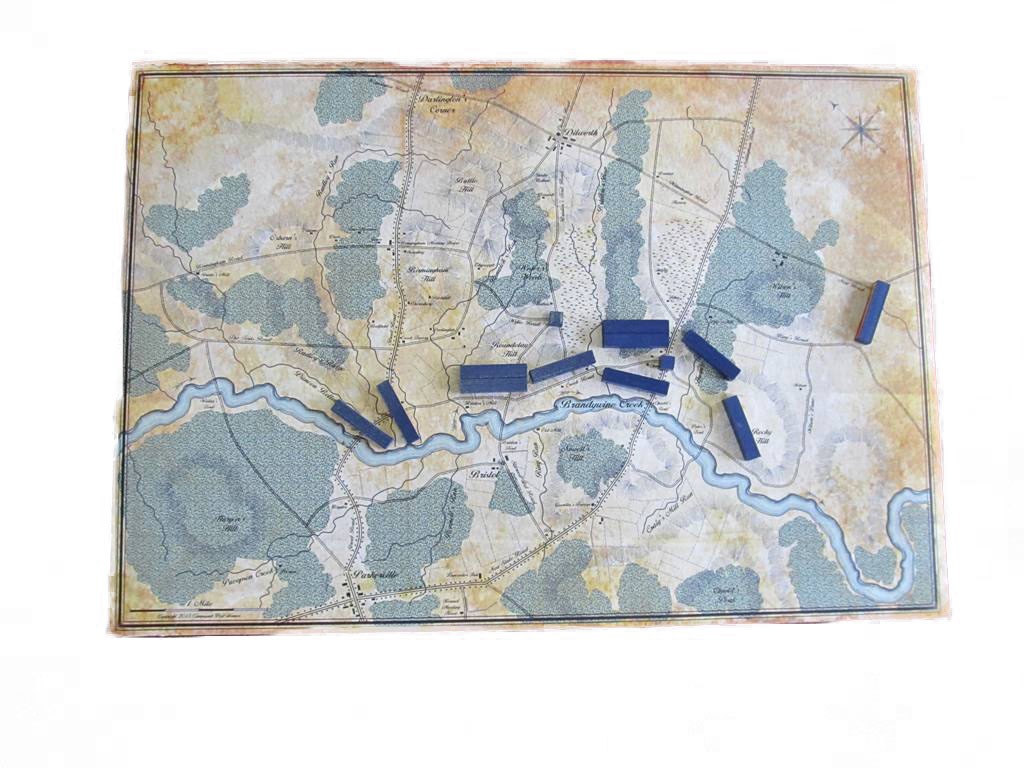
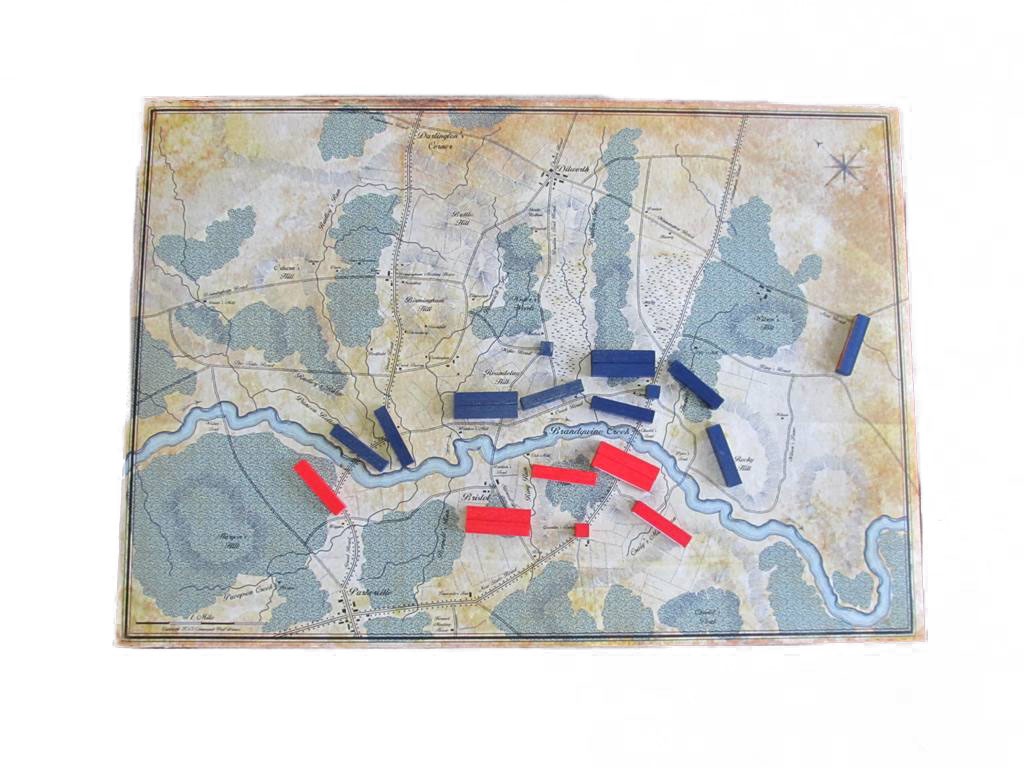
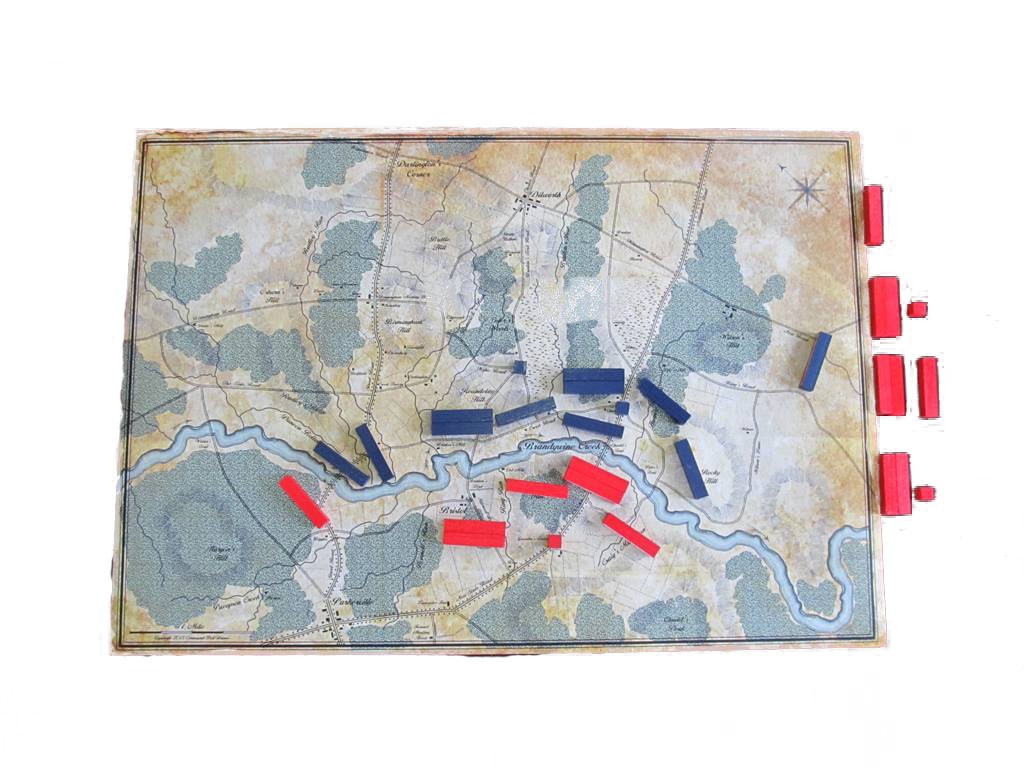


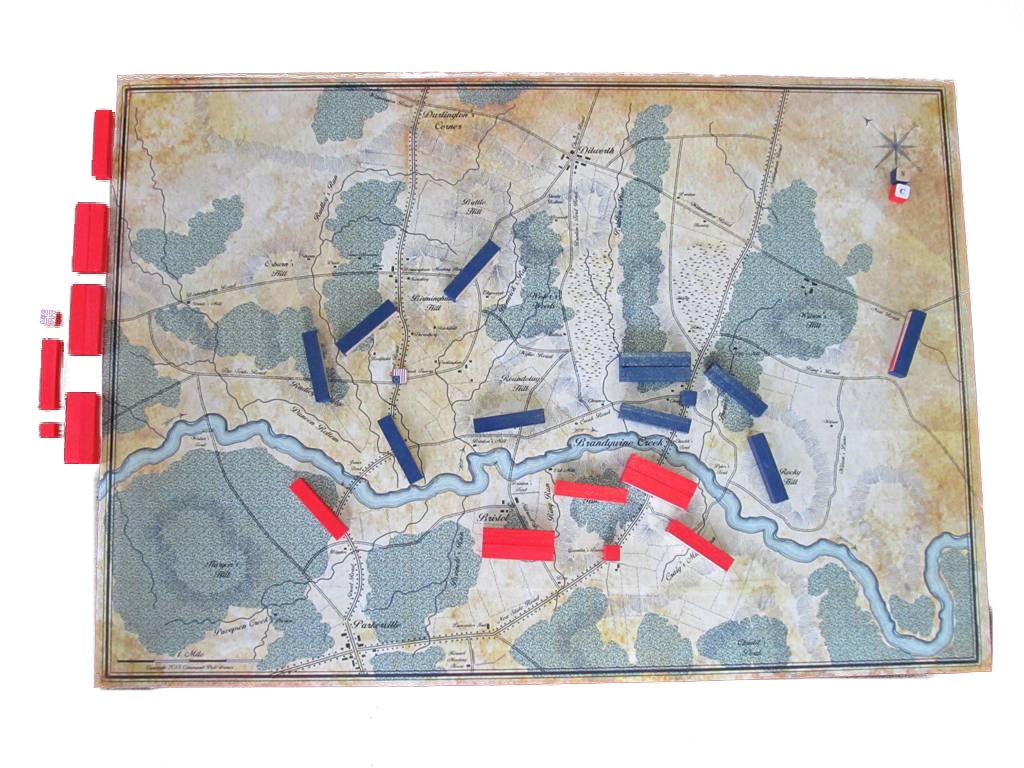
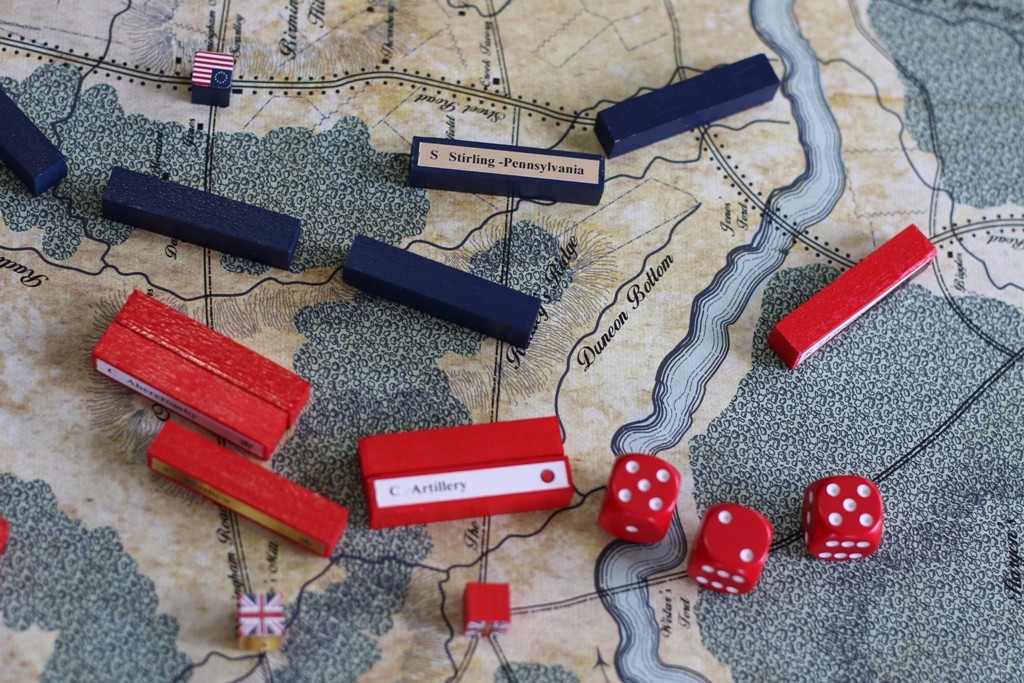


My second or now of four of these games, Brandywine is a wail of a game and map on canvas is great feel for the period (hell they all are).
Im thinking of getting Monmouth with paper map and see what it is like.
Brandywine 3.0
Brandywine 3.0 is a significantly different game than the original Brandywine. Bottom line, the addition of an elite infantry division (supposedly Maxwell’s “Light Infantry”) shifts the play balance dramatically in favor of the Americans, making even a minor victory pretty much impossible for the British. They simply don’t have enough time, in only five turns, to bring their overwhelming force to bear, with Knyphausen unable to mount any kind of real threat.
This is ahistorical in that Maxwell’s light Infantry was not strong enough to merit another block. In any case, his companies were deployed as light Infantry west of the Brandywine to slow the British advance, in a series of actions that take place off map, prior to the game’s start. The addition of “detachments” – three for each side – also heavily favors the Americans, allowing them to trade space for time without sacrificing their scarce infantry blocks. It likewise grossly overstates the impact that these small detachments – typically only a few hundred men each – had on the battle.
The innovative logistics rules have no real impact on the game. The American baggage trains aren’t under any real threat, given the inability of the British to force a crossing of Brandywine Creek without taking very heavy casualties. The Americans, for their part, don’t have the offensive power to penetrate the British line, so Cornwallis is able to advance his supply train right behind his army, onwhichever flank he chooses to deploy.
The new rules regarding retreats likewise don’t have much impact. This is a distributed battlefield, with little depth on either side. The game plays very much like the original with earlier versions of the rules.
Having said that, if you remove Maxwell’s division from the American order of battle, eliminate all but one of the deachments on either side, and begin the game two turns earlier, you get something much more balanced, and much more reflective of the historical battle. The new baggage trains rules come into play with more time for the British to develop the situation, and a more precarious American defense of the creek itself.
The new timeline is still pretty reasonable, historically. The actual battle lasted well into the dusk and evening hours. The American player will probably have to accept not rallying any of his spent units, as he will have to evacuate his trains in front of the advancing British. Cornwallis and Howe will confront the same difficult choice, but for a different reason. If they unpack their trains close to the edge of the map to rally their units that are spent in the initial fight, they will quickly advance beyond supporting distance of their trains. On the other hand, if Cornwallis advances his trains right behind his wing of the army, he will find more and more of his blocks spent as he advances deeper onto the map.
In a way, yes, it is easier for the Colonials now to win. The elite helps. A few extra detachments help. On the other hand, the baggage trains hurt. Remember, if they are forced to move a train, they lose!
It can be harder for both sides to rally with the baggage now. We figure this is a net gain for the Brits as they have several elites. Elites can keep fighting without rallying. A spent Elite that launches a new attack is essential the same as a fresh regular infantry. They can take the same damage before they die. So if neither side can rally, the Brits have the edge. They can keep pushing.
Also remember that with the new rules, there isn’t so much of a time requirement. They could fight into a 2nd day. If the Colonials withdraw during the night or have to move a train, they lose. They are fighting inflict enough damage that it offsets their battle defeat. A Pyrrhic British victory.
Nice exchange. Since my last comment, I have replayed Brandywine twice with the new rules, and have also played Marengo, Antietam, and Gettysburg with them. Bottom line: they play faster, cleaner, and make for a much more interesting game, which was the intent, I presume. I especially like the impact of the new logistics rules, which force
Interestingly, my last Brandywine game saw a British victory, even playing with all the detachments, Maxwell’s elite block, and the loss of the second British dragoon unit. The key event was a forced retreat by Mathews, who was defending the river in front of the Continental artillery, which was positioned on the hill overlooking Chadds Ford. Important to note here, the artillery cannot support under the new rules, so the American player will routinely position an infantry block in front of the hill, so that the artillery is not vulnerable to direct attack but can still bombard.
So, Knyphausen bombarded the elite light infantry, spending them, and a two-block British attack forced them to withdraw. So, guess what? The Continental artillery and the infantry block supporting it were forced to retreat and become spent in turn, leaving the ford uncovered. The American player was forced to deploy Green in a thin line of single blocks to prevent a advance on the baggage train, which the American player was forced to unpack in order to rally all of the units that had become spent in this single engagement.
Well, Greene saved the Baggage train – but in the process, lost enough infantry to tip Washington’s army over the cliff of 50 per cent losses. So I was wrong in my original post – even with the addition of Maxwell, the British can still win. The new rules and revised Order of Battle make the game a real cliff hanger, which it was in real life.
A comment on detachments is in order, however, for all of the games that include them. The new 3.0 scenarios list the detachments in the order of battle, but do not provide any details on entry or deployment. This is not a big issue for the games, like Antietam and Marengo, where almost all the forces begin the game on the map. For Gettysburg, however, it begs the question of how and when the detachments are deployed. I had the Confederate detachments enter with the leading elements of each corps; the Union detachments entered with the first three large corps – I Corps, IX Corps, and XII Corps. I would be interested in the designers’ comment on this issue.